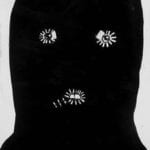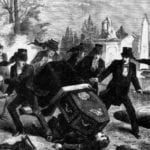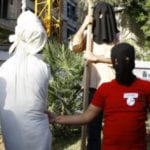 Music
Music  Music
Music  History
History 10 Less Than Jolly Events That Occurred on December 25
 Weird Stuff
Weird Stuff 10 Funny Ways That Researchers Overthink Christmas
 Politics
Politics 10 Political Scandals That Sent Crowds Into the Streets
 Weird Stuff
Weird Stuff Ten Bizarre Facts About The Doge Meme
 Our World
Our World 10 Ways Your Christmas Tree Is More Lit Than You Think
 Movies and TV
Movies and TV The 10 Coolest Stars to Set Sail on The Love Boat
 History
History 10 Things You Didn’t Know About the American National Anthem
 Technology
Technology Top 10 Everyday Tech Buzzwords That Hide a Darker Past
 Humans
Humans 10 Everyday Human Behaviors That Are Actually Survival Instincts
 Music
Music 10 Surprising Origin Stories of Your Favorite Holiday Songs
 History
History 10 Less Than Jolly Events That Occurred on December 25
 Weird Stuff
Weird Stuff 10 Funny Ways That Researchers Overthink Christmas
Who's Behind Listverse?

Jamie Frater
Head Editor
Jamie founded Listverse due to an insatiable desire to share fascinating, obscure, and bizarre facts. He has been a guest speaker on numerous national radio and television stations and is a five time published author.
More About Us Politics
Politics 10 Political Scandals That Sent Crowds Into the Streets
 Weird Stuff
Weird Stuff Ten Bizarre Facts About The Doge Meme
 Our World
Our World 10 Ways Your Christmas Tree Is More Lit Than You Think
 Movies and TV
Movies and TV The 10 Coolest Stars to Set Sail on The Love Boat
 History
History 10 Things You Didn’t Know About the American National Anthem
 Technology
Technology Top 10 Everyday Tech Buzzwords That Hide a Darker Past
 Humans
Humans 10 Everyday Human Behaviors That Are Actually Survival Instincts
10 Cruel Death Marches From Modern History
Regular readers of Listverse will be familiar with the Trail of Tears. In one of the most shameful events in US history, thousands of Native Americans were forced to march from their homelands to land in Oklahoma. But the Trail was merely a dark warning of what was to come in the 20th century when “death marches,” a form of mass murder via walking and starvation, became horribly common. The Trail of Tears was awful, but the industrial revolution and assembly line–fed modern armies soon took death marches to new heights of cruelty.
10The Armenian Genocide
1915–1918
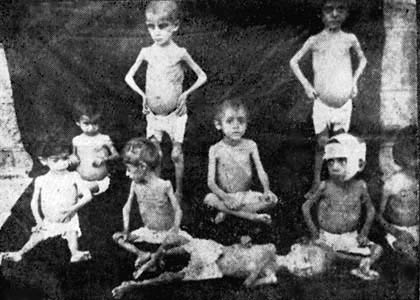
In the 20th century, the world gained a new word: genocide. Starting in 1915, as many as 1.5 million people were murdered by the Ottoman government in an attempt to exterminate its minority Armenian citizens—one of the first genocides in modern history. The Armenians came to call it Medz Yeghern, “the great crime.”
The genocide was carried out in phases, the first of which was the wholesale slaughter of every able-bodied male Armenian the Ottoman government could find. The second saw women and children forced to march across the wastes of the Syrian desert. In 1915, the New York Times described how Armenians were being forcibly deported from the towns around Cilicia to the desert south of Aleppo. It went on to note that the marches meant certain death, “since they will find neither house, work, nor food in the desert. It is a plan to exterminate the whole Armenian people.”
That the Ottoman government was using the marches themselves as a means of execution is clear. Another New York Times article describes how Armenians were systematically starved and brutalized along the way, many of them resorting to eating “grass, herbs, and locusts, and in desperate cases dead animals and human bodies.” Many were robbed, raped, or murdered by the soldiers supposedly there to guard them.
The Armenian genocide assembled all the diabolical machinery of industrial-scale genocide, including cattle cars, concentration camps, death marches, and government bureaucracy, all foreshadowing an event every bit as brutal: the Holocaust.
9The Chelm Massacre
1939
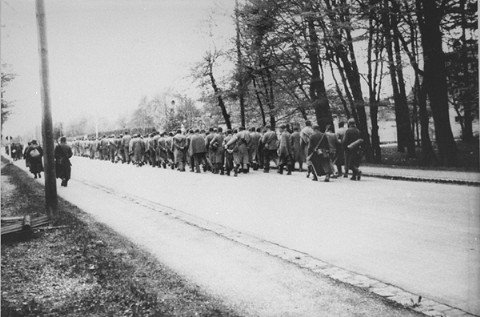
The city of Chelm, in eastern Poland, has a tragic history of Jewish persecution. In 1648, a long period of violent outbreaks culminated in the murder of some 400 Jews in the Chmielnicki massacres. The few survivors faced continued oppression and the seizure of their property. But even this pogrom would pale in comparison to the events of the 20th century.
The events leading up to the Chelm death march began in October 1939, when occupying Soviet forces withdrew from the city as part of an agreement with Nazi Germany. On December 1, the Nazis rounded up the male Jewish population and compelled them to march to the Bug River, where they intended to force them over to the Soviet side. More than half of the marchers were killed along the way. At the Bug, the Soviets refused to allow the Jews to cross and many were forced to leap into the river and swim for the opposite bank.
In a speech written for the unveiling of a monument to the victims of the march, Blima Lorber, whose father David survived the ordeal, quoted from his autobiography: “The Nazis started to call us and took away everything we had; beating and killing those who refused to obey. We were put in rows and the order was to walk out of the town and then run. If someone refused he was shot dead. Nobody could speak nor look back or try to look at the person at his side. The Germans told us if someone would violate this order he would be immediately killed. In some places we would stop and several men were chosen to dig their own graves. And we, the other men, horrified and in panic had to start running again.”
Of 2,000 Jewish men and boys who left Chelm, it is estimated that as few as 150 survived.
8Stutthof Death March
1945
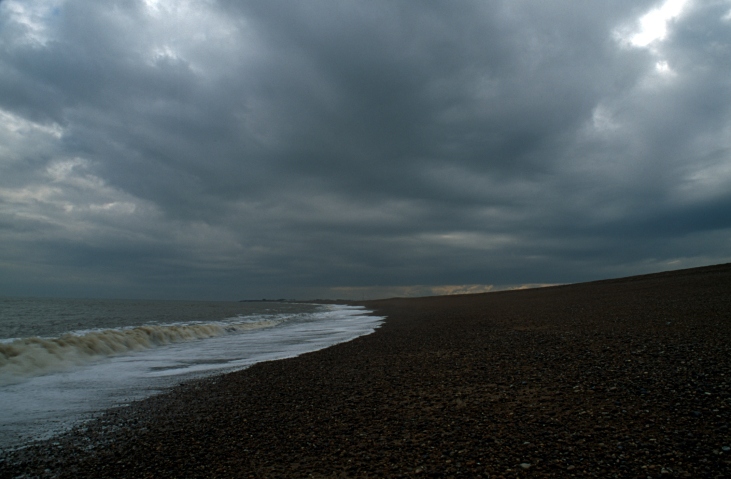
The Stutthof concentration camp was established in 1939, built around what was originally a citizen internment camp on the Danzig-Elbing highway. It has been estimated that more than 100,000 prisoners, including many non-Jewish Poles, passed through its electrified fences. It was from Stutthof that Professor Rudolf Spanner was said to have obtained the corpses needed to create his horrific soap made from human flesh.
When the evacuations began, there were nearly 50,000 prisoners in the camp. The first 5,000 were marched to the Baltic Sea, forced to walk out into its waters, and machine-gunned down to the last man. Local civilians willingly participated in herding the prisoners down the beach to be killed. The remaining inmates were marched toward Lauenburg until, blocked by Soviet forces, they returned to Stutthof, where thousands more perished.
On January 25, 1945, as Soviet forces closed in on the camp, the official order to evacuate completely was issued. Over 25,000 prisoners were force-marched for 10 days, with food supplies for two. The SS murdered anyone who fell behind. Smaller evacuations were arranged by sea, where thousands more perished.
Stutthof was liberated by the Red Army in March 1945.
7Auschwitz Death March
1945
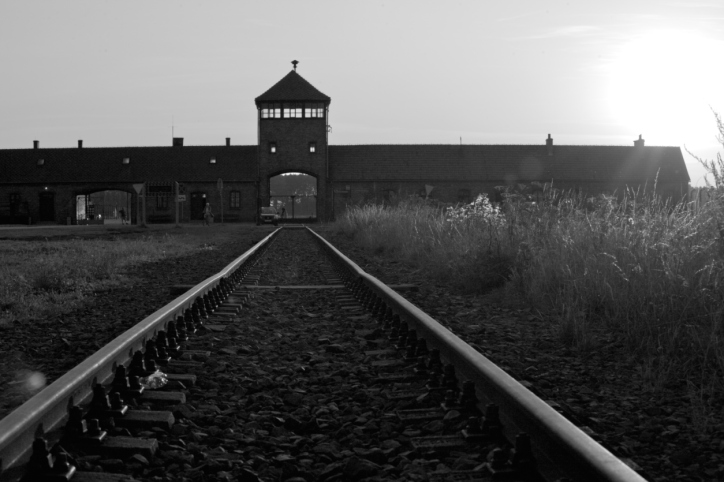
“Arbeit Macht Frei,” read the sign at the front entrance. “Work makes you free.”
One of the last death marches to take place under the Nazi regime occurred in mid-January of 1945. This was the evacuation of the notorious Auschwitz camp complex, the largest of its kind. The SS marched as many as 60,000 inmates, mostly to Wodzislaw Slaski and Gliwice, where they were loaded onto unheated freight trains to other camps. While the evacuation was supposed to consist only of the able-bodied, many sick or underage prisoners volunteered, based on the not-unreasonable belief that anyone left behind would be murdered.
The men were marched first, while women and children marched separately, all wearing little more than rags. In many cases, prisoners were forced to march while pulling their captor’s luggage and weapons. Stragglers and those that attempted escape were executed immediately, with thousands of bodies forming a grisly trail behind the marches. In one case, a train packed with prisoners from Auschwitz was fired on by SS officers and the local police, killing more than 300 men. Up to 15,000 people lost their lives during the evacuation.
Today, numerous memorials mark collective graves along the routes. A partial reenactment of the death marches is held yearly, during which thousands of mourners march in silence from the site of Auschwitz to Birkenau. The tour has the hopeful name of “March of the Living.”
6Bataan Death March
1942
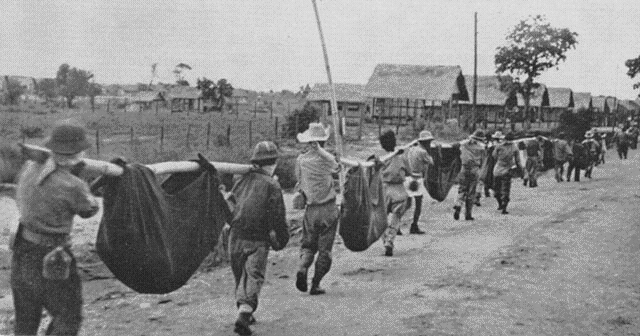
The Nazis weren’t alone in instigating death marches during World War II. After the Battle of Bataan in the Philippines in 1942, the Imperial Japanese Army forcibly transferred thousands of American and Filipino POWs to the former US base at Camp O’Donnell, killing up to 10,000 in the process.
Bataan didn’t begin as an intentional death march. After the surrender of the Allied forces, Japanese General Masaharu Homma realized that there were more prisoners than could be transported by truck to the nearest prison camp. The only other option was to march the malnourished men most of the way.
The prisoners were forced to walk 88 kilometers (55 mi) to San Fernando, then were taken by rail to Capas and marched the remaining 13 kilometers (8 mi) to the prison camp. Along the way, the Japanese army treated them in an infamously brutal fashion. The soldiers were denied water, forced to sit in the blazing sun for hours at a time, bayoneted, beheaded, shot, or simply left to die. Every day, they tied a man to a tree and shot him as an example to the others. Any native Filipinos who tried to help the prisoners were also shot. The Japanese at that time held a firm cultural belief that men should die before surrender, and their disdainful attitude toward POWs was partially responsible for the atrocities.
After the war, General Homma was tried and convicted by a US Military Commission and executed in 1946.
5Sandakan Death Marches
1945
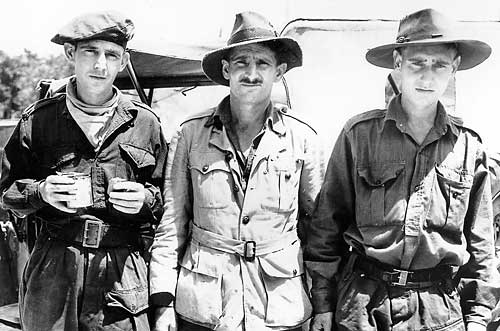
In early 1945, after the airfield at Sandakan in northern Borneo had been bombed by Allied forces, camp commandant Hoshijima Susumu decided to move the Australian and British POWs housed there. Kept in three camps, the prisoners had already stopped being fed when it was announced that they were going to be marched to Jesselton (now Kota Kinabalu) to be used as laborers. Instead, they were marched to the town of Ranau, 260 kilometers (162 mi) away.
The marches were conducted in two waves, the first of which left between January and February 1945. The first group of 455 POWs were made to march through marshland and heavy rains. Those who fell behind were bayoneted or shot. In April, with Allied forces approaching, the Japanese destroyed the camp almost completely, and evacuated the remaining prisoners. Around 530 were sent on the second wave of the murderous death march to Ranau. When they reached the town, there were only 183 men left.
At Ranau, the situation did not improve. Brutality, disease, and starvation ravaged the camps, killing almost all of the prisoners. In August, the last 40 remaining POWs were executed. Susumu and eight others were eventually tried and hanged for war crimes relating to the march. By then there were only six survivors, three of them pictured above, left to tell the tale. All were escapees. No one who remained in the camps lived.
4Brno Death March
1945
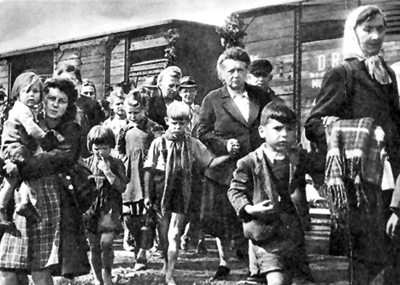
A brutal reality of genocide is that once the victims are safe, they often turn against the members of the population that hurt them. Revenge and retribution is a sad constant of the human condition.
Beginning on the very first day of peace after World War II, in an act precipitated by anti-Nazi sentiment, the 20,000 German inhabitants of Brno, the capital of the Czech province of Moravia, were forcibly expelled to Austria. The march began shortly after a German woman and her baby were clubbed to death and thrown into the Elbe River by an angry mob. From London, President Benes issued radio speeches urging his people to “take arms and kill Germans.” Some people were expelled or killed simply for having German names.
A survivor of the march (which consisted almost entirely of women, children, and the elderly, as most of the men had been conscripted elsewhere) named Marie Ranzenhoferova has spoken about the suffering. On the first day, there were no problems until nightfall, when the refugees were locked in a barn. Romanian soldiers arrived, “broke in, and began raping the women. There was shooting. People were beaten, and they tore their earrings off, and took their rings, some people died, but in the camp, it was like a slaughterhouse. The next morning, at around 4 AM, I got up and wanted to continue walking, and I saw they were loading the trucks with corpses.”
Upon arrival in Austria, Soviet forces refused entry to the refugees, and they were marched back to the city. There, they were interned in a field outside the village of Pohorelice, where many died of starvation and disease. Around 20,000 Germans participated in the marches, with at least 700 confirmed deaths. Over the following years, Eastern European countries would go on to expel millions of ethnic Germans.
3The Tiger Death March
1950
The Korean War saw numerous death marches perpetrated by the North Koreans, most famously the Tiger death march. The prisoners would have their combat boots and outer clothes confiscated despite the cold weather. Meals consisted of little more than a rice ball a day and little to no water. Many died from malnutrition and disease.
The Tiger death march was actually part of a series of marches, usually around 193 kilometers (120 mi), to an internment camp near Pyongyang. One of the victims was an 80-year-old nun, part of a group of prisoners thrown in with the POWs for “anti-Communist activities.”
During the march, a North Korean major known only by his nickname, “The Tiger,” led a group of approximately 850 American prisoners on the march north. Along the way, he and his guards killed 89 men. Those that survived the Tiger’s cruelty took to calling themselves “The Tiger Survivors.” One survivor described the Tiger, a large man with a scar on his cheek, as someone “with no humanity about him.”
Only 262 men ever returned from the Tiger’s camps. One of the most celebrated survivors is Army Private First Class Wayne Johnson, who risked his life to record the names of 496 of the soldiers who lost their lives in captivity.
2The National Defense Corps Incident
1951
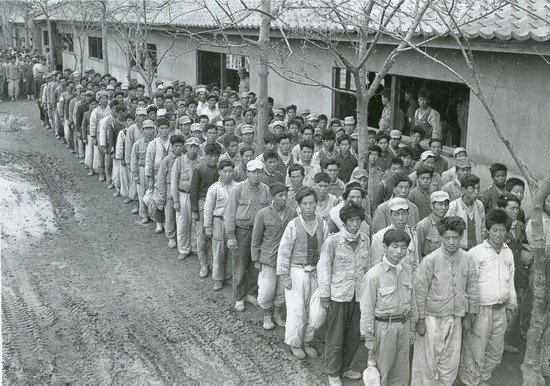
The South Korean National Defense Corps Incident (as it came to be known) is unique on this list in that it was a deadly march inflicted on an army by its own corrupt commanders. The US-backed Syngman Rhee was the first President of the Republic of Korea (also known as South Korea). He immediately gained a reputation for corruption—which extended to his ROK armed forces. In an effort to stop North Korea from commandeering men into their army, Rhee mandated that men 17–40 be conscripted into the National Defense Corps.
The NDC had a budget for 200,000 men—which promptly went missing. This became a disaster when a Chinese offensive led to the NDC being ordered on a forced march south in the dead of winter. Without funds to obtain food or clothing, up to 90,000 men died of starvation or exposure on the march.
Soon after, investigations revealed that the ROK’s own commanders had embezzled the money. Several top officers were convicted and executed. Syngman Rhee was widely suspected of involvement, although little evidence was ever found.
1The Evacuation Of Phnom Penh
1975
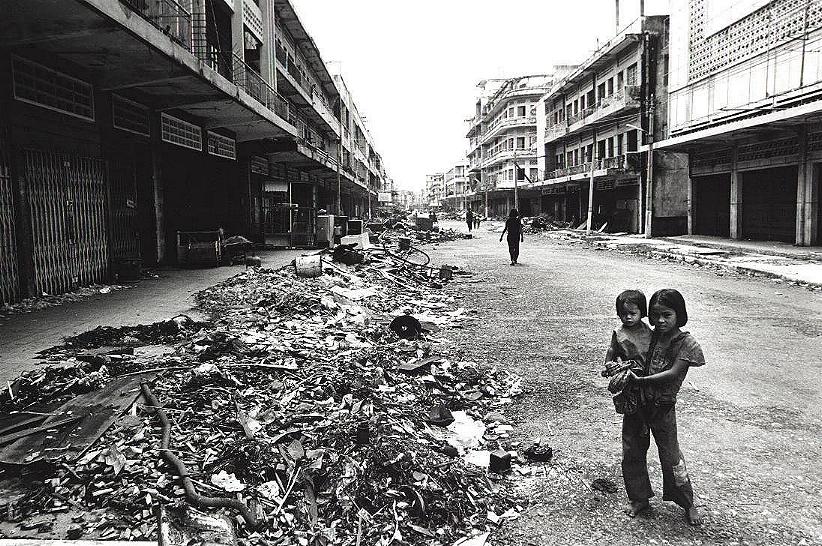
The evacuation of Phnom Penh, the capital of Cambodia, marks the blurring of the line between death marches and “population displacements.” The forces that would become known as the Khmer Rouge foreshadowed Pol Pot’s brutal regime with a forced evacuation of the city on April 17, 1975. They claimed it would only last three days. Phnom Penh would remain almost empty for three years.
The city’s inhabitants were driven into the countryside, where many found themselves part of forced labor camps and “collectives.” While some claimed that the evacuations were not particularly violent, other witnesses stated that the CPK (Communist Party of Kampuchea) troops shot people that refused to leave their homes. Others reported seeing dead bodies lying in the streets.
Some food stockpiles were arranged outside the city but the manner in which evacuees were treated largely came down to the individual commanders overseeing the groups. Many witnesses described corpses along the roads, remembering that people were killed because of something as small as not wanting to leave their bicycle behind. The most widely accepted estimate is that up to 2.6 million people were eventually expelled, but the numbers are hard to determine, with the CPK claiming as many as four million in 1977.
The event foreshadowed one of the greatest horrors of modern history: the Cambodian Genocide. It was a mad nightmare of mass graves and warped political philosophy which would ultimately claim 1.5–3 million lives. To this day, Cambodia’s war crime tribunals have only handed out one conviction—to former prison chief Kaing Guek Eav (better known as Duch), who was given life in prison for overseeing the deaths of some 15,000 people.
Lance LeClaire is a freelance artist and writer. He writes on subjects ranging from science and skepticism, atheism, and religious history and issues, to unexplained mysteries and historical oddities, among other subjects. You can look him up on Facebook, or keep an eye for his articles on Listverse.
